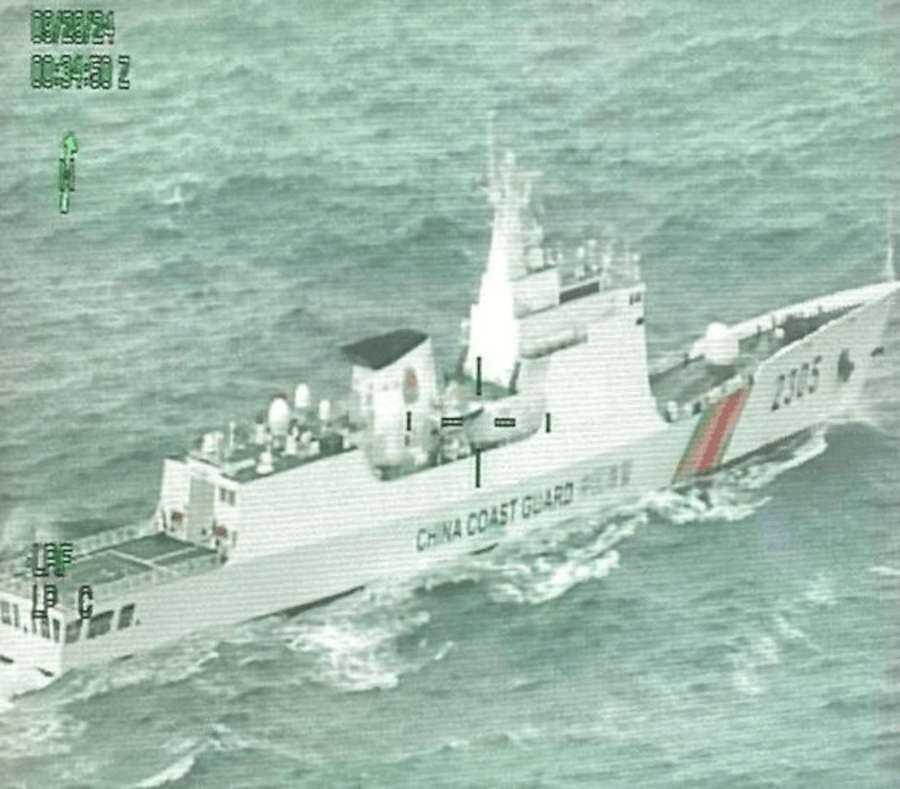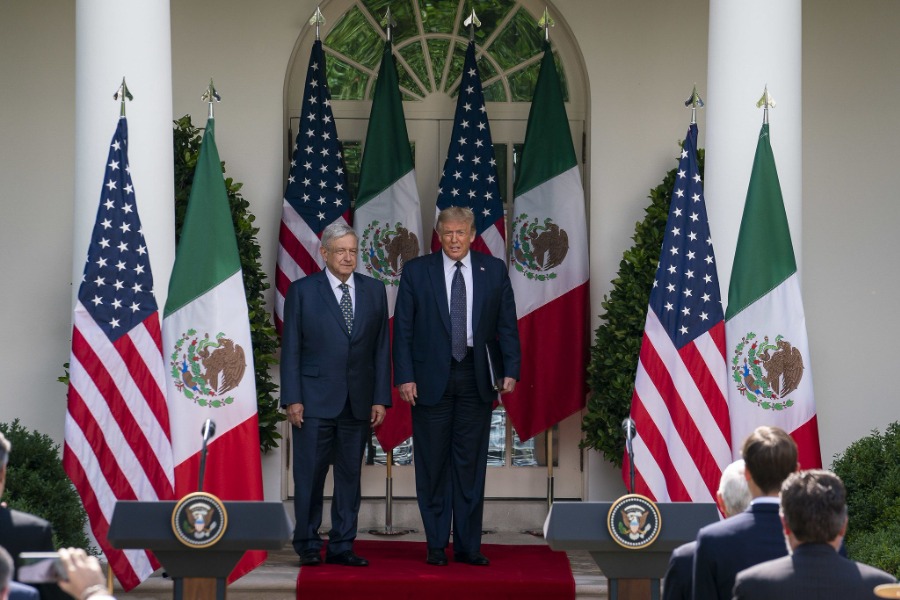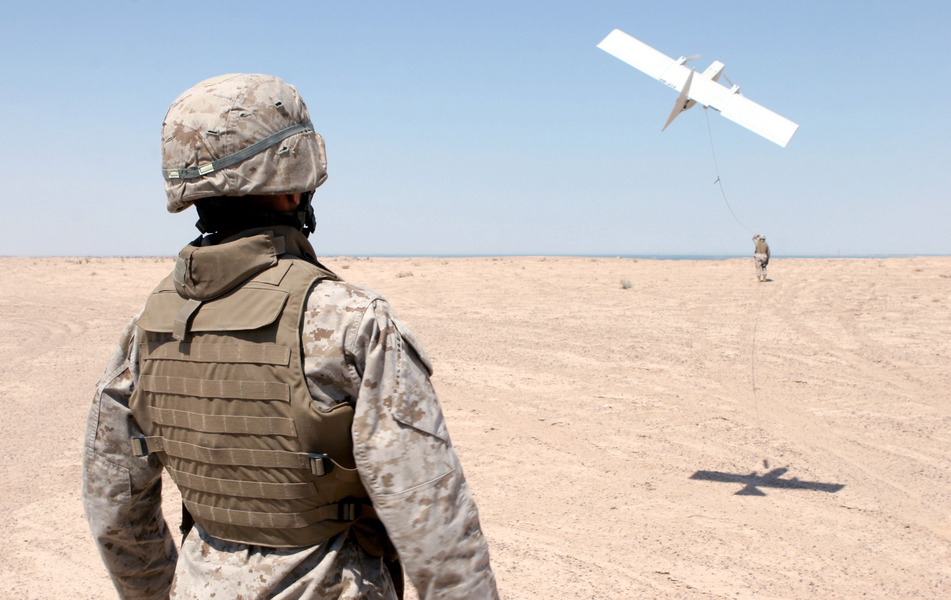Water Wars: Partnerships and Perils

Published by The Lawfare Institute
in Cooperation With

The spirit of Halloween has reached across the Pacific. In China, police cracked down on public Halloween celebrations, which began over the weekend of Oct. 26 and 27. The crackdowns come on the anniversary of last year’s politically charged Halloween celebrations in Shanghai, where citizens used costumes to protest the Chinese Communist Party’s pandemic restrictions and economic policies. Meanwhile, U.S. President Joe Biden and First Lady Jill Biden hosted their last Halloween trick-or-treat event at the White House. The first lady attended the event dressed as a giant panda. Earlier this month, she joined the Smithsonian in welcoming two giant pandas from China.
Building Alliances, BRIC by BRIC
BRICS+ Summit
In 2006, the emerging economies of Brazil, Russia, India, and China began to meet informally under the moniker “BRIC” in an effort to collectively increase their sway in the international arena. In 2010, the group expanded to include South Africa, and its acronym changed to “BRICS.” The group has a rotating chairmanship, which, in January 2024, fell to Russia. As part of its chairmanship program, Russia hosted the 2024 BRICS Summit from Oct. 22 to Oct. 24 in Kazan, the capital of the Russian republic of Tatarstan. The event marks the first-ever summit of BRICS+, during which the group—which continues to serve as a means for emerging powers to pool their global influence—welcomed five new members: Egypt, Ethiopia, Iran, Saudi Arabia, and the United Arab Emirates (UAE).
Chinese President Xi Jinping delivered a keynote address to the summit on Oct. 23. Xi called on participants to “build a BRICS committed to peace” and “innovation.” Regarding the former, he emphasized “three key principles: no expansion of the battlefields, no escalation of hostilities, and no fanning flames, and strive for swift deescalation of the situation.” As for the latter, Xi discussed China’s recently launched China-BRICS Artificial Intelligence Development and Cooperation Center and announced China’s plans to establish, among various other programs, a BRICS Deep-Sea Resources International Research Center and a China Center for Cooperation on Development of Special Economic Zones in BRICS Countries. Xi also underscored the importance of “green” development and of “reforming global governance.”
On the last day of the summit, Xi spoke again, this time as part of the BRICS+ Leaders Dialogue. Xi’s speech focused on consolidating “the[g]reat [s]trength of the Global South” and amplified China’s global alliances and involvement in various “hotspot issues,” including “the Ukraine crisis” and conflict in Gaza. Xi also discussed the success of China’s Global Development Initiative and discussed proposals for new initiatives, including the creation of a Global South Think Tanks Alliance.
China-India Border Agreement
On Oct. 22, India announced the conclusion of a new agreement regarding its shared border with China. Vikram Misri, India’s foreign secretary and a former ambassador to China, explained that India and China had reached a new deal concerning patrolling arrangements along the Line of Actual Control (LAC) between the India-controlled territory of eastern Ladakh and China-controlled Aksai Chin. Misri explained that the agreement was the result of “several weeks” of discussions that involved both diplomatic and military channels. On Oct. 24, President Xi and Indian Prime Minister Narendra Modi met on the sidelines of the BRICS+ Summit. According to reporters, Xi told Modi that “[i]t is important for both sides to have more communication and cooperation, properly handle differences and disagreements, and facilitate each other’s pursuit of development aspirations.” Xi also noted that both countries have to “shoulder” their “international responsibilities, [and] set an example for boosting the strength and unity of developing countries.” In a post on X after the meeting, Prime Minister Modi emphasized that “[m]utual trust, mutual respect and mutual sensitivity will guide bilateral relations.”
The agreement is intended to improve ties that were damaged by a deadly military border clash in 2020. In June 2020, 20 Indian soldiers and 4 Chinese soldiers were killed in hand-to-hand fighting in the Galwan Valley in Ladakh, India. The fighting marked the first deadly border clash between the two countries in nearly 60 years, and the deaths of Indian soldiers triggered outrage and street protests. The leaders’ sideline meeting in Russia was their first formal meeting in five years.
China-Russia Joint Arctic Drills
On Oct. 2, Chinese state media reported that a Chinese Coast Guard fleet entered the Arctic Sea for the first time for a joint patrol with Russian counterparts. The ship, Meishan, entered the region on the 75th anniversary of both the founding of the People’s Republic of China and of China-Russia diplomatic relations. The announcement of China’s entry into the Arctic came a day after the U.S. Coast Guard said it spotted four vessels from the Russian Border Guard and Chinese Coast Guard in the Bering Sea, approximately five miles inside Russia’s exclusive economic zone. It was “the northernmost location” the U.S. Coast Guard had observed Chinese Coast Guard ships. On Oct. 8, Russian news agencies reported that Chinese and Russian navy warships practiced anti-submarine missions in the northwestern Pacific Ocean. The missions are part of a joint patrol by the two countries in the Asia-Pacific region. Russia and China are said to have started naval exercises in the Sea of Japan in late September as part of the so-called Beibu/Interaction - 2024 program, which includes anti-aircraft and anti-submarine weapons.
Europe’s Indo-Pacific Presence
While the BRICS met, European powers made efforts the past month to enhance their Indo-Pacific presence.
European Union Deepens Engagement with Indo-Pacific Partners
Japan and the EU formed a security and defense partnership during EU foreign policy chief Josep Borrell’s visit to Tokyo—the first such partnership between the EU and an Indo-Pacific country. The visit occurred on the occasion of the first Japan-EU Foreign Ministerial Strategic Dialogue. Under the auspices of the partnership, the EU and Japan will deepen their naval cooperation, including through joint exercises, port calls, and maritime capacity building of other Indo-Pacific countries. It also laid out the EU and Japan’s interest in coordination on space security, cyber issues, non-proliferation, defense-industrial issues, and more. Without explicitly naming China, the partnership recognized that the EU and Japan “face an increasingly challenging and interlinked security environment as demonstrated by unilateral attempts to change the status quo by force.”
After Tokyo, Borrell flew to Seoul for the first EU-Republic of Korea Strategic Dialogue, where he and South Korean Minister for Foreign Affairs Cho Tae-yul announced their own security and defense partnership. The EU-Korea partnership covers similar ground to the EU-Japan partnership. The two officials also “shared their joint grave concerns over Russia’s military cooperation with the DPRK [Democratic People’s Republic of Korea] notably the deployment of DPRK troops to participate in Russia’s illegal war of aggression against Ukraine, and arms transfers between the DPRK and Russia.”
Elsewhere, commentary focused on the strategic imperatives the EU faces in the Indo-Pacific. Special Adviser to the President of the European Commission and former President of Finland Sauli Niinistö produced a report for the European Commission on Europe’s civilian and defense preparedness. The report noted China’s “long-held ambitions to take over Taiwan”—arguing that the “economic and security impact of Chinese aggression against Taiwan or in the South China Sea would be staggering for Europe.” The report also observed that the U.S. shifting its security focus to East Asia “could leave Europe to face the Russian threat with dwindling” American presence, “forcefully underlin[ing] the extremely urgent need for a stronger EU contribution to European security.”
At the same time, if the United States curtails its role in Taiwan and Japan’s security, as Donald Trump has warned he would as president, then the EU’s role in East Asia will become more important. Yet at this point, Stephen Nagy of International Christian University in Japan warned that the EU and Japan’s security presence—without American support—would be insufficient to deter Chinese aggression. Léonie Allard, visiting fellow at the Atlantic Council, similarly argued in October that the U.S. and the EU have yet to develop a “clear transatlantic agenda” for engagement in the Indo-Pacific and dealing with the threat of China.
Zooming out from a focus on Northeast Asia, Chris Humphrey, the executive director of the EU-ASEAN Business Council, argued in an op-ed in October that the EU’s relative political absence from Southeast Asia, including its “lukewarm” engagement with the Association of Southeast Asian Nations (ASEAN), hurt its business and strategic interests.
The United Kingdom Pledges Stepped-Up Pacific Presence
U.K. Prime Minister Keir Starmer also announced increased security presence in the Indo-Pacific during the Commonwealth Heads of Government Meeting held in Samoa (a voluntary association composed mostly of former territories of the British Empire). The U.K. pledged to expand the Royal Navy’s presence in the region, including additional joint patrols with Pacific Island states. Those patrols will focus on maritime security, illegal fishing, and natural disaster response. The U.K. and Australia also announced a Pacific Business Club to facilitate British investment in the region. Finally, the Commonwealth nations agreed at the meeting to adopt the Ocean Declaration, “which calls on all 56 Commonwealth nations to protect and restore the ocean in the face of severe climate change, pollution and impacts related to over-exploitation.”
The move comes as part of the so-called Indo-Pacific tilt. The U.K. government first announced the “tilt” in then-Prime Minister Boris Johnson’s review of British security, defense, development, and foreign policy. That review argued the U.K. must “engage more deeply” in the Indo-Pacific. Whether and how the new Labor government, led by Starmer, would maintain the previous Conservative government’s tilt was an openquestion that Starmer’s announcement helped answer. The announcement came a year after a parliamentary report last October—two years into the tilt—argued that the tilt “was far from being achieved,” pointing out that the U.K. maintains a “modest presence compared to allies, little to no fighting force in the region, and little by way of regular activity.”
NATO Defense Ministers Emphasize Indo-Pacific Security
Finally, the NATO defense ministers’ meeting in Brussels in mid-October highlighted the security pact’s focus on Indo-Pacific issues. The ministers’ meeting included counterparts from Australia, Japan, New Zealand, and South Korea for the first time. The NATO ministers and their Indo-Pacific counterparts held “talks on common security challenges, including in the context of Ukraine and the support that China, North Korea, and Iran are providing to Russia’s war effort.”
Before the meeting, Council on Foreign Relations Fellow David Sacks argued in a blog that although NATO’s ability to project force directly in the Indo-Pacific is limited, the pact can still take steps to contribute to Indo-Pacific security. Those measures include preparing for the risk of the United States shifting security resources to the Indo-Pacific, enhancing defense industrial cooperation with Indo-Pacific partners, warning China of economic consequences to its aggression, and countering China’s narrative of NATO encroachment and meddling in the region.
Testing the Waters in the Taiwan Strait
China Holds Military Exercises Around Taiwan
On Monday, Oct. 14, China launched large-scale military drills around Taiwan and surrounding islands, involving Chinese warships, fighter jets, troops, and rocket forces. The People’s Liberation Army (PLA) sent a record 153 aircrafts and 36 naval coast guard ships around the island during the one-day military exercises—a single-day record, according to a senior Taiwanese national security official. Of those, 111 warplanes reportedly crossed the Median Line (the informal line of demarcation in the Taiwan Strait) and entered Taiwan’s air defense identification zone. China’s oldest air carrier, the Liaoning, participated in the drills for the first time. The exercises were meant to simulate sealing off Taiwan’s key ports.Taiwan’s defense ministry said that its aircraft, navy vessels, and coastal missile systems monitored the activity.
Beijing said that it conducted the military drills as a “stern warning” in response to a National Day speech made by Taiwan’s president Lai Ching-te the previous week. In that speech, Lai vowed to protect Taiwan’s sovereignty in the face of threats from China, saying that the island “is not subordinate” to China and that Beijing “does not have the right to represent Taiwan,” a message Beijing interpreted as promoting independence. China’s Taiwan Affairs Office said that the drills were “resolute punishment for Lai Ching-te’s continuous fabrication of ‘Taiwan independence’ nonsense.” Meanwhile, the secretary-general of Taiwan’s security council said that Taiwan’s military “will definitely deal with the threat from China appropriately” and that “[t]hreatening other countries with force violates the basic spirit of the United Nations Charter to resolve disputes through peaceful means.” Pentagon spokesperson Maj. Gen. Patrick Ryder said in a statement that the “entire world has a stake in peace and stability across the Taiwan Strait, and we continue to see a growing community of countries committed to peace and stability across the Taiwan Strait.”
Brian Hart, a fellow at the Center for Strategic and International Studies’s China Power Project, noted that “Beijing is normalizing the use of these large-scale military and coast guard activities under the Lai administration,” and said that an accident between Chinese and Taiwanese forces could plunge them into an “escalation spiral.” China held similar large-scale exercises after Lai was inaugurated in May and similarly simulated a blockade after former House Speaker Nancy Pelosi visited the island in 2022.
U.S., Canada Navies Transit the Taiwan Strait
Less than one week after China conducted its large-scale war games in mid-October, a U.S. and a Canadian warship sailed through the Taiwan Strait together on Oct. 20. The U.S. Navy transits the Strait approximately once a month. The U.S. Navy’s 7th Fleet said in a statement that American destroyer USS Higgins and the Canadian frigate HMCS Vancouver made a “routine transit” “through the waters where high-seas freedom of navigation and overflight apply in accordance with international law.” The 7th Fleet said that the transit “demonstrated the United States’ and Canada’s commitment to upholding freedom of navigation for all nations as a principle” and made clear that the United States “rejects any assertion of sovereignty or jurisdiction that is inconsistent with freedoms of navigations, overflight, and other lawful uses of the sea and air.” China’s Eastern Theater Command said that its forces monitored the ships and that “[t]he actions of the United States and Canada disrupted the peace and stability of the Taiwan Strait,” while Taiwan’s defense ministry said that the situation was “as normal.” The two ships sailed a similar joint mission in November last year.
Two days later, on Oct. 22, China held one-day live-fire drills in an area around the island of Niushan, 66 miles from Taiwan.







